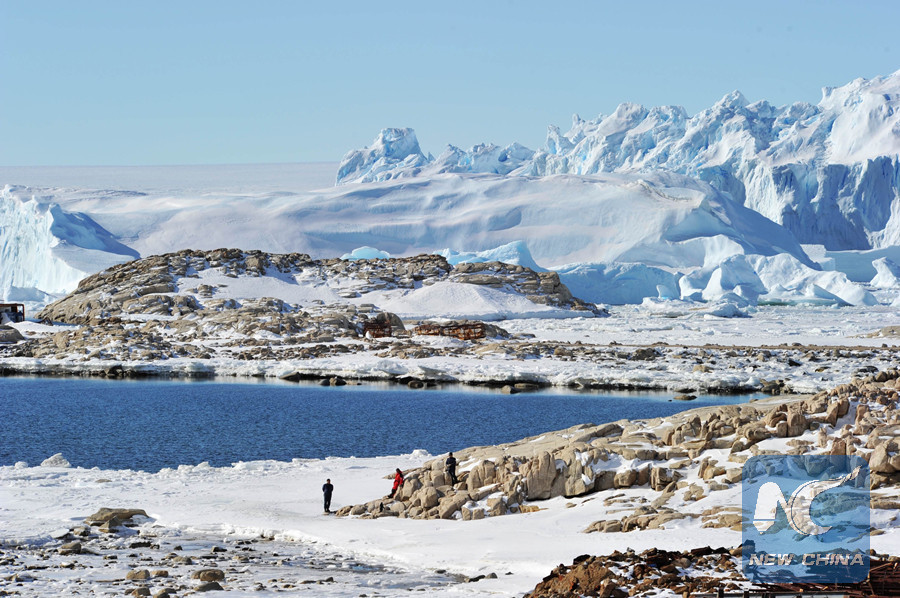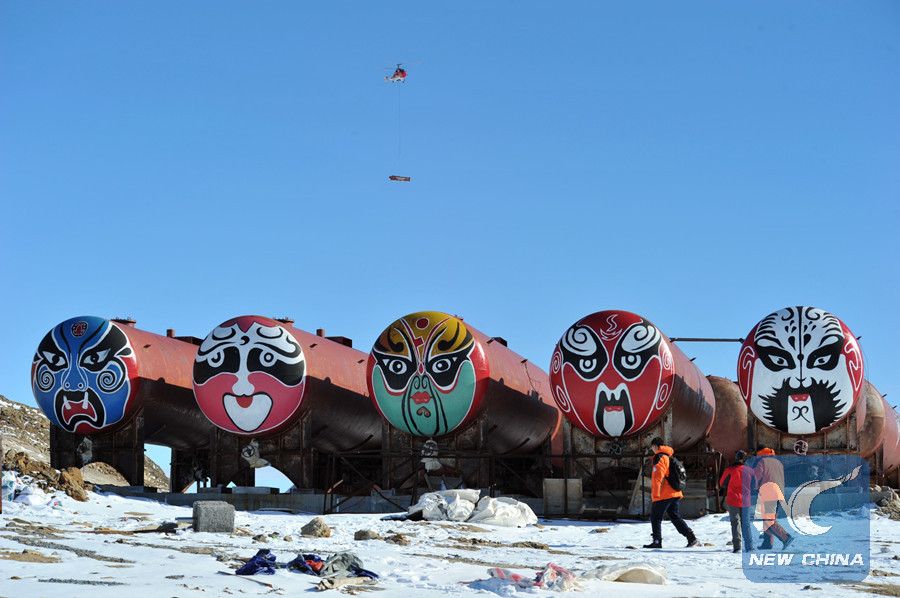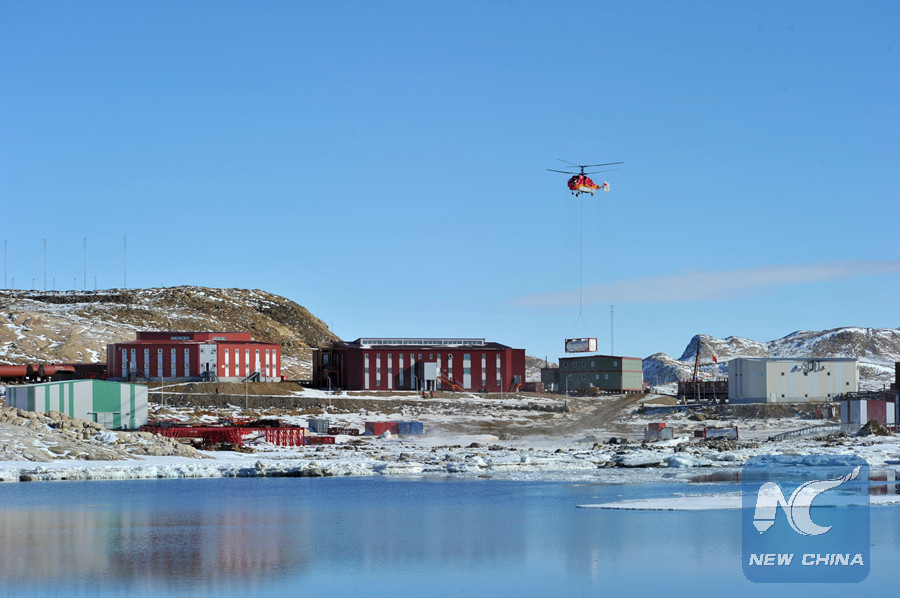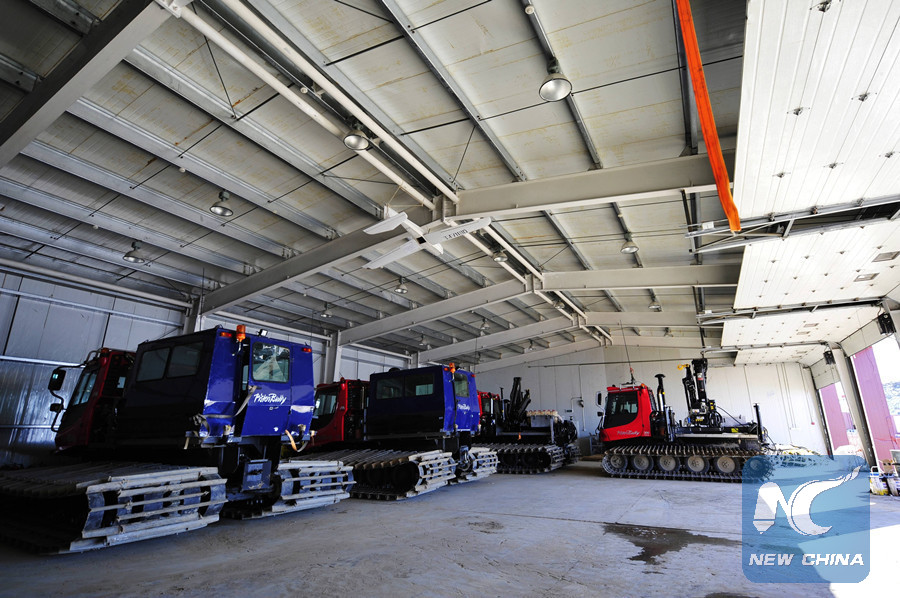
The iceberg near the Zhongshan Station, in Antarctica. (Xinhua/Zhang Jiansong)
ZHONGSHAN STATION, Antarctica, Dec. 9 (Xinhua) -- Seen from the sky, the Zhongshan Station of China is an area easy to be distinguished from the rest of Antarctica: a red multi-functional building, a green hexagon building, and several oil tanks painted with Peking opera masks standing on an area of rocks and soil.

Peking Opera facial makeups drawn on oil tanks at the Zhongshan Station. (Xinhua/Zhang Jiansong)
One month after departing from Shanghai, the 256 scientific research team members boarding China's icebreaking research vessel Xuelong are now harboring at the station.
Later, they will continue to visit Kunlun, Taishan and Changcheng stations, the other three Chinese research stations in Antarctica, and perform various research tasks, according to the plan of the country's 33rd Antarctic expedition. The team will also carry out environmental clean-up around the stations.

The Zhongshan Station. (Xinhua/Zhang Jiansong)
Located on Larsemann Hills facing east Antarctica's Prydz Bay, the Zhongshan Station, built in February 1989, is the second Chinese research station on the land of ice and snow.
When entering the station, there are two things that you can't miss: a bucket of water and two shoe shiners. Why? Because researchers can easily muddy their shoes after treading on the soil and ice outside.

The bucket and shoe shiners. (Xinhua/Rong Qihan)
After getting inside, researchers still can't just rush into the warm buildings, for they have to take off the coat and put on the slippers first. It's a necessary way to keep the station clean and tidy.
There are 17 buildings in the station, equipped with telecommunication facilities, apartments, and scientific labs.
Life in the station is not that dull. A ping-pong table gives researchers lots of pleasure. Wi-Fi is also available now.

A winter living compound of the Zhongshan Station. (Xinhua/Zhang Jiansong)
The winter living compound is a place for them to chat and rest.
The garage houses a very important part of outdoor work: vehicles on belts. This kind of vehicle is preferred when traveling on snow and ice as the belts are safer, and can deal with extremely low temperatures and continuous winds.
Also, there is a doctor, a surgery room and sufficient medical supply at the station.

A garage at the Zhongshan Station. (Xinhua/Zhang Jiansong)
Among the four research stations, Changcheng and Zhongshan serve as the year-round bases, while Taishan and Kunlun are only used in the summer.
During the past winter, 19 Chinese researchers have stayed for 368 days in the Zhongshan Station, and conducted various scientific research programs on atmosphere, aurora, meteorological observation and earth tide among others.
They have also cleaned up the station during the winter. The garbage containers lined at the bottom of the hill have already been classified and are waiting to be delivered back to China for further treatment.

